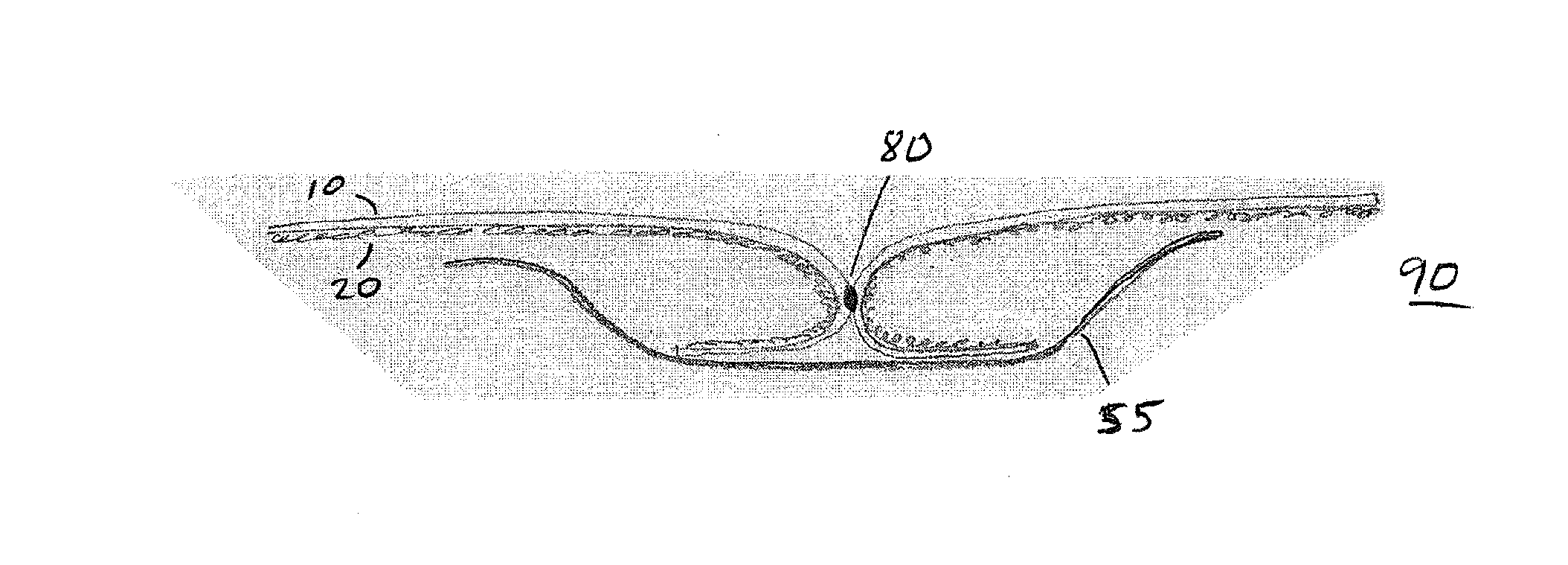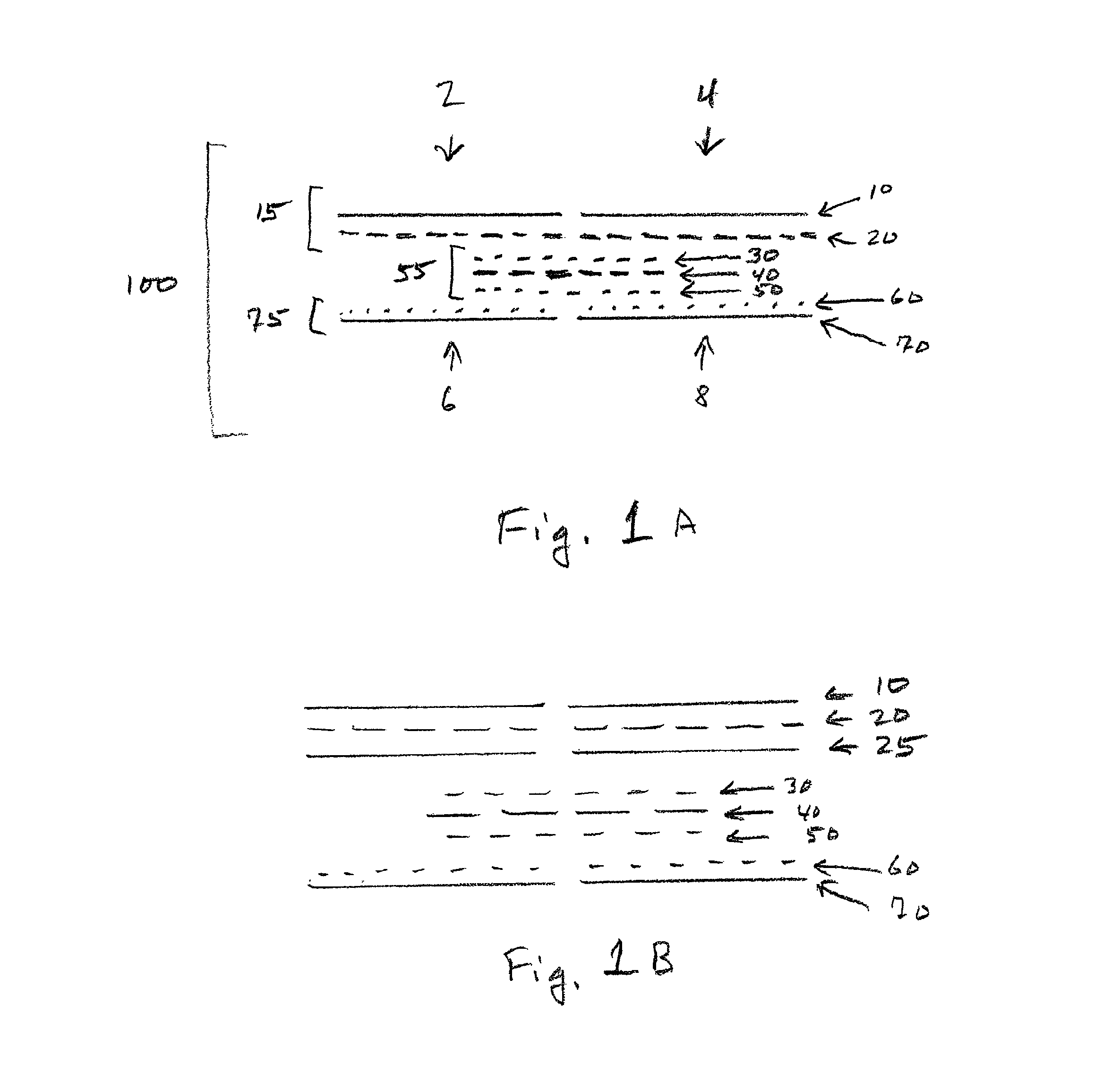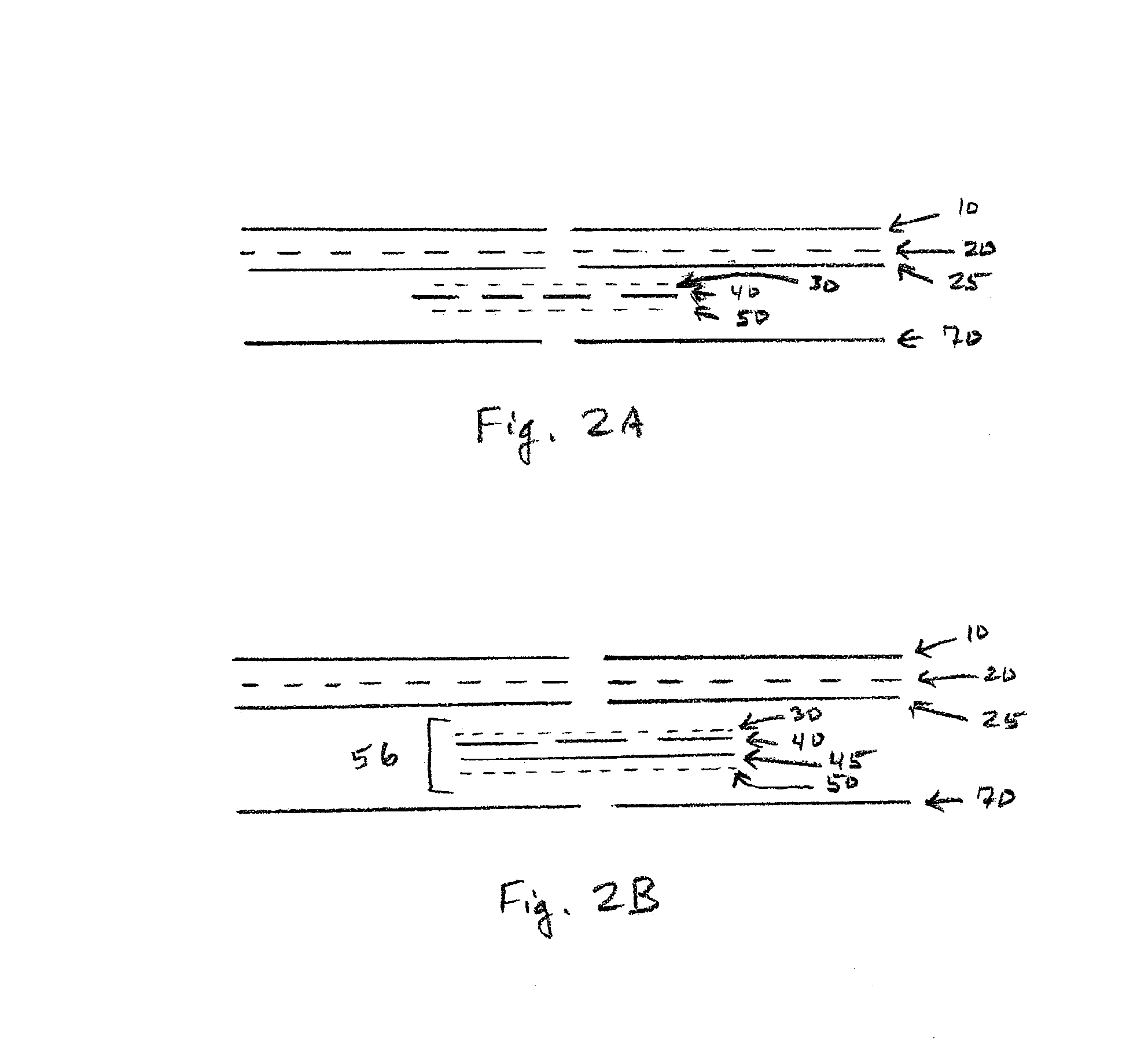Waterproof garment with invisible barrier seam
a technology of invisible barrier and waterproof garment, which is applied in the directions of cloth making applications, bandages, transportation and packaging, etc., can solve the problems of unsatisfactory waterproof seam, unattractive seam, and commercially unviable, and achieve the effect of strengthening seam, adding permeability barrier, and adding warmth and comfor
- Summary
- Abstract
- Description
- Claims
- Application Information
AI Technical Summary
Benefits of technology
Problems solved by technology
Method used
Image
Examples
Embodiment Construction
[0021]The invention provides an “invisible barrier seam” and methods for making the seam, seam tapes, and garments or other textile products containing the seam. An invisible barrier seam according to the invention creates a hydrostatic barrier between two pieces of waterproof or water resistant fabric. This is accomplished using a seam design that allows a seam tape containing a hydrophobic polymer membrane to be adhered to the inner surfaces of an outer fabric and an inner fabric that are joined at the seam. The result is a hydrostatically sealed seam structure possessing a seam tape that cannot be seen from either the outer face or the inner face of the seam. The invisible barrier seam is especially suited for joining laminated fabrics needed to make “shell” jackets and other outerwear, having a water resistant outer shell, a non-containable insulating inner lining fabric such as a fleece, and a hydrophobic polymer membrane between the shell and lining.
[0022]The term “non-contain...
PUM
| Property | Measurement | Unit |
|---|---|---|
| melting temperature | aaaaa | aaaaa |
| melting temperature | aaaaa | aaaaa |
| melting temperature | aaaaa | aaaaa |
Abstract
Description
Claims
Application Information
 Login to View More
Login to View More - R&D
- Intellectual Property
- Life Sciences
- Materials
- Tech Scout
- Unparalleled Data Quality
- Higher Quality Content
- 60% Fewer Hallucinations
Browse by: Latest US Patents, China's latest patents, Technical Efficacy Thesaurus, Application Domain, Technology Topic, Popular Technical Reports.
© 2025 PatSnap. All rights reserved.Legal|Privacy policy|Modern Slavery Act Transparency Statement|Sitemap|About US| Contact US: help@patsnap.com



